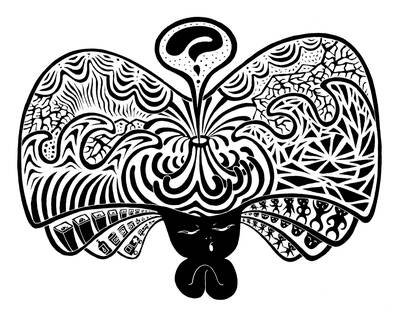Since People magazine produced its list of "losers of the year" last week, we have been mulling what a Taiwanese version would look like. Doing the same thing in Taiwan, of course, provides one with an embarrassment of riches from which to choose; the problem is winnowing such a rich harvest.
First place, surely, must go to Sophie Wang (
Loser number two: Diane Lee (
Loser number three: Christine Tsung (宗才怡). Appointed minister of economic affairs on the strength of little more than her ability to raise funds for Chen Shui-bian (陳水扁) in the US, she lasted just 48 days in office. In a written statement, Tsung said she felt like a "rabbit that had mistakenly stumbled into the jungle without any knowledge of the political traps that lay all around."
Fourth place has to go to John Chang (章孝嚴), the man who spent most of December celebrating that he finally had Chiang Ching-kuo (蔣經國) listed as his father on his ID card. Let's see; this is a man who wants to rebuild a political career as a mover and shaker in the KMT -- from where he fell from grace after, believe it or not, an affair with Sophie Wang. How to show commitment to democratic values: get officially recognized as the son of Taiwan's last dictator.
Fifth, perhaps President Chen Shui-bian. It is almost impossible to think of a single accomplishment of Chen's government in the past 12 months. All we have had are a series of wishy-washy economic plans, largely meaningless because the budget is lacking. It is, however, only too easy to think of a number of snafus, for example the bizarre about-face over direct links, and the entire treatment of the farmers' and fishermen's associations' bad-loan problem. What a shame, all that power and no idea how to use it.
Other losers this year include Chang Po-ya (
Last, but not least for our top 10, let's just throw in most of Kaohsiung's city councilors, many of whom are so forgetful they currently can't remember where the millions of dollars they found in their bank accounts last week came from. Not quite as good as last year's top loser, Chu Mei-feng (

Labubu, an elf-like plush toy with pointy ears and nine serrated teeth, has become a global sensation, worn by celebrities including Rihanna and Dua Lipa. These dolls are sold out in stores from Singapore to London; a human-sized version recently fetched a whopping US$150,000 at an auction in Beijing. With all the social media buzz, it is worth asking if we are witnessing the rise of a new-age collectible, or whether Labubu is a mere fad destined to fade. Investors certainly want to know. Pop Mart International Group Ltd, the Chinese manufacturer behind this trendy toy, has rallied 178 percent
My youngest son attends a university in Taipei. Throughout the past two years, whenever I have brought him his luggage or picked him up for the end of a semester or the start of a break, I have stayed at a hotel near his campus. In doing so, I have noticed a strange phenomenon: The hotel’s TV contained an unusual number of Chinese channels, filled with accents that would make a person feel as if they are in China. It is quite exhausting. A few days ago, while staying in the hotel, I found that of the 50 available TV channels,
There is no such thing as a “silicon shield.” This trope has gained traction in the world of Taiwanese news, likely with the best intentions. Anything that breaks the China-controlled narrative that Taiwan is doomed to be conquered is welcome, but after observing its rise in recent months, I now believe that the “silicon shield” is a myth — one that is ultimately working against Taiwan. The basic silicon shield idea is that the world, particularly the US, would rush to defend Taiwan against a Chinese invasion because they do not want Beijing to seize the nation’s vital and unique chip industry. However,

Life as we know it will probably not come to an end in Japan this weekend, but what if it does? That is the question consuming a disaster-prone country ahead of a widely spread prediction of disaster that one comic book suggests would occur tomorrow. The Future I Saw, a manga by Ryo Tatsuki about her purported ability to see the future in dreams, was first published in 1999. It would have faded into obscurity, but for the mention of a tsunami and the cover that read “Major disaster in March 2011.” Years later, when the most powerful earthquake ever